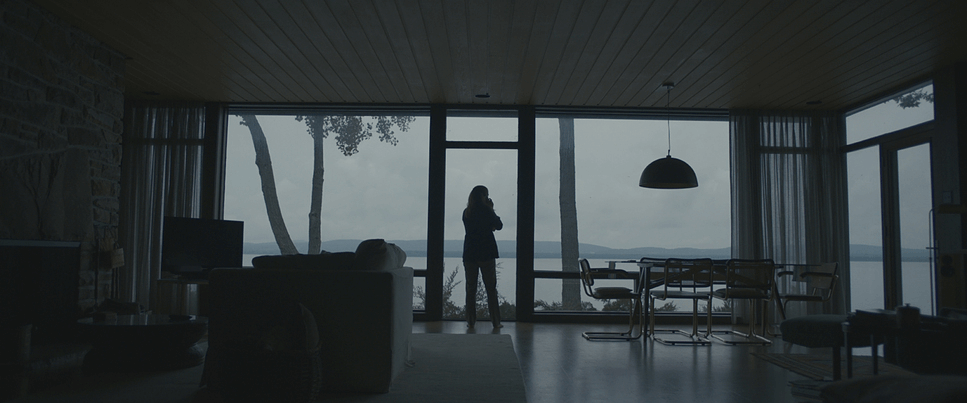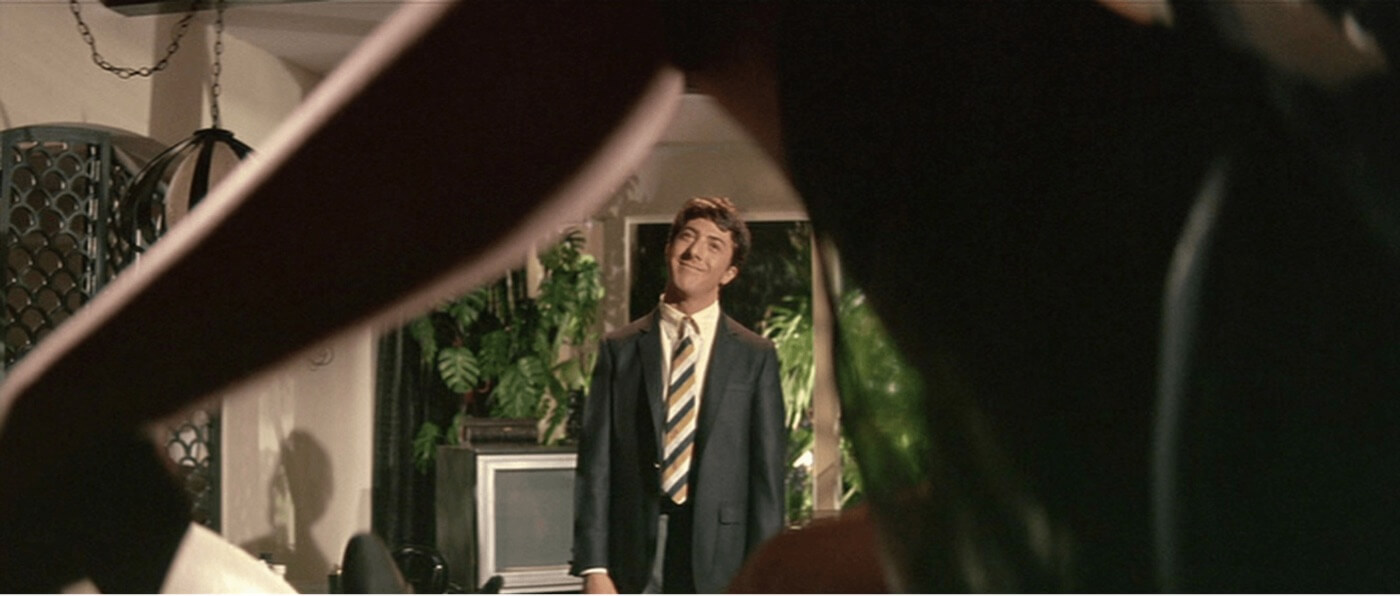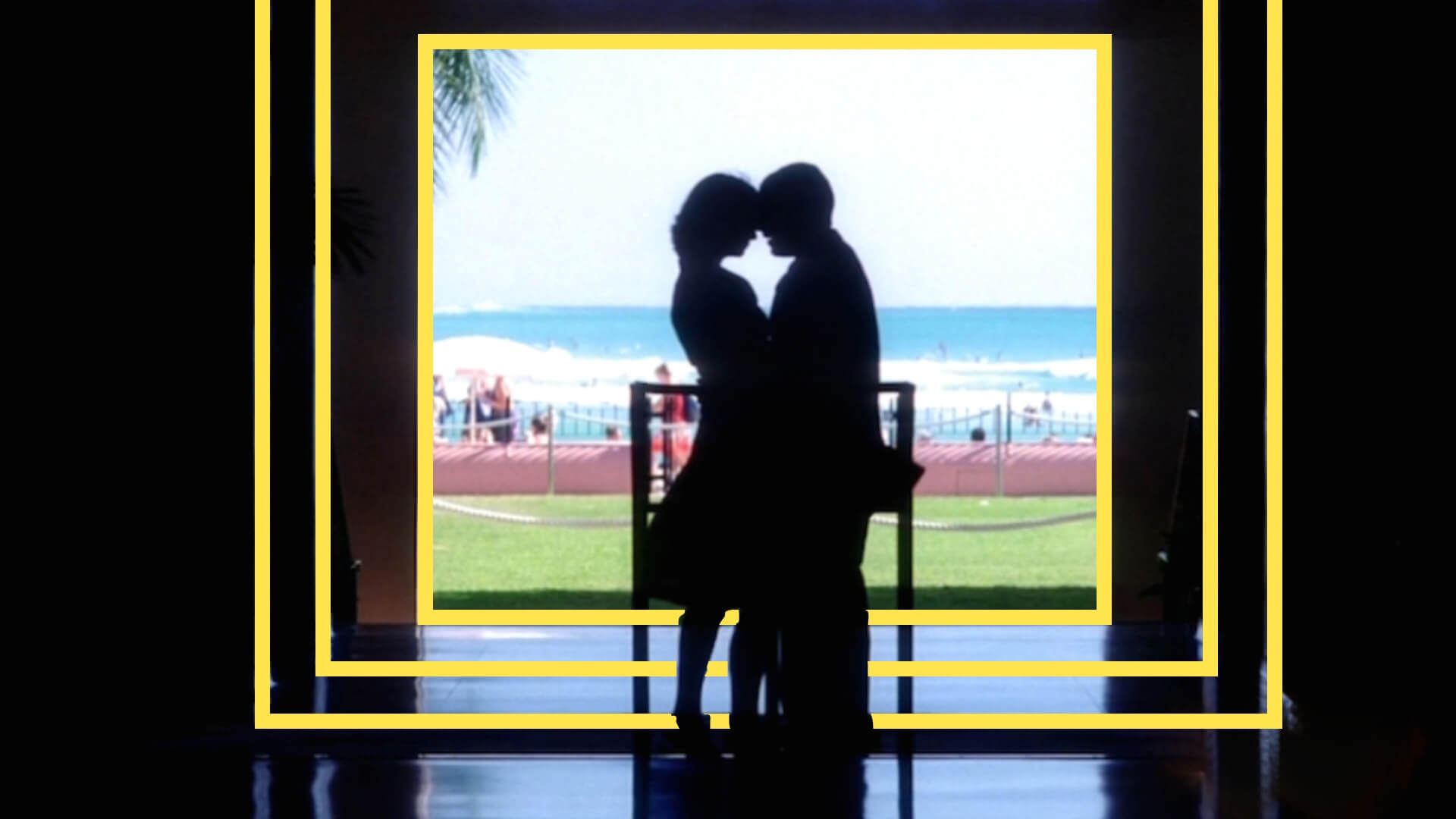There are certain compositional techniques that make a shot visually beautiful. There are other compositional techniques that are effective at visually telling a story. The frame within a frame does both. And any compositional technique that can tell a better story while simultaneously creating a more cinematic shot is worth learning about. What is a frame within a frame in film and photography? You may be familiar with the term, but in this article we’ll dive a bit deeper. Let’s take a look at the different effects this technique has on an audience and the different ways to create one.
What is a Frame Within a Frame?
Frame within a frame meaning
The term “frame within a frame” sounds a bit straight forward, but it can also be misleading. Let’s take a look at the frame within a frame meaning to hone in on the compositional technique.
FRAME WITHIN A FRAME DEFINITION
What is a frame within a frame?
A frame within a frame is the use of visual elements in a scene to border a subject, further drawing the focus to them. The first frame is the literal shape and border of the entire image. The second frame is then created within the image, hence the term. To create this additional frame, photographers and cinematographers often use windows, doors, or other foreground elements. Subjects can also be framed with background elements that create the shape around the subject. It does not always have to be rectangular or square, just a shape that borders a subject.
What is a frame within a frame used for?
- Direct the viewer’s focus
- Create deeper meaning
- Establish an observational perspective
Framing in Movies
Why use a frame within a frame?
This is not an uncommon compositional technique in cinema. In fact, it is quite common. Why is it so common? Because it can be used for various effects.
Direct the viewer’s focus
Creating an additional frame can direct the viewer’s focus and attention more immediately toward a subject. By framing a subject with visual elements, filmmakers are basically underscoring or highlighting the area of the shot where the viewer should look.
Take this wide shot from Arrival, one of Denis Villeneuve’s best films.

Arrival • Framing examples in film
The shot does not suggest to us where to look through light, but rather composition. The architecture of the space creates a "natural" border around the subject. As a result, the shot narrows our perspective toward what is within the frame.
Create deeper meaning
Using this technique can also create deeper meaning in a shot. A character within the confinement of a secondary frame can reflect their state of isolation or loneliness.
Wong Kar-wai’s In the Mood for Love is filled with countless shots that utilize a frame within a frame. Why is the compositional technique so prevalent? To reflect the themes that the story explores.
This video by Nerdwriter1 analyzes how the use of this technique reinforces the film's themes of social norms and creates an atmosphere of tension.
In The Mood For Love: Frames Within Frames • framing film
A frame within a frame has more than just aesthetic function. It’s a valuable technique to tell a story and elicit emotion in an audience.
Establish an observational perspective
As the audience, when we watch a subject that is framed within a frame we might feel as if we are observing from afar by looking through a window, doorway, or down the hall. This effect is common in Paul Thomas Anderson’s directing style.
Paul Thomas Anderson: Frames Within Frames • framing in movies
PTA’s use of the frame within a frame allows us to be a bit more observational and objective as we watch a story unfold. PTA is very intentional as to when he uses close up shots and when he uses a frame within a frame to distance us from characters.
Create depth
Visually, using multiple frames can also add a tremendous amount of depth to a shot. Because many uses of this technique inherently use foreground and background elements, the depth of the shot is accentuated.
If your shot seems to fall flat, look for any opportunity to use additional framing. This will force you to utilize either the foreground, background, or both in your composition.

Punch Drunk Love • Framing examples in film
As you can see, this is a valuable tool that can be used for various effects. It is a great compositional technique that can make a shot more impactful.
Related Posts
Photography Frame Within a Frame
How to Create a Frame within a Frame
Creating this effect is as simple as finding any shape or visual element in your scene that can use to surround your subject. Here are a few different elements to look out for.
Foreground elements
One of the most common ways to do this is by using foreground elements. These are elements that fall between your subject and the camera.
This can be set pieces like doorways, windows, or furniture. Getting creative with what foreground elements you use will result in a more memorable shot.
For example, this iconic frame within a frame from The Graduate uses a leg to trap the main character Ben (Dustin Hoffman).

The Graduate • Framing examples in film
Not only does this image have a whole bunch of narrative meaning, its creative use of foreground makes it a memorable example of framing.
Silhouettes
Though it can be effective, you don’t always need to use foreground elements to do this. Sometimes the background of a scene can create the frame.
In this scene from one of Quentin Tarantino’s best films, The Hateful Eight, the background and barn create a silhouetted border.

The Hateful Eight
The silhouette utilizes the background as context for the characters within the frame. Paul Thomas Anderson is another auteur director who makes use of the silhouette for this effect in his film Punch Drunk Love. Check out our breakdown of this shot in our video analysis below.
How Paul Thomas Anderson Crafts a Cinematic Moment • Subscribe on YouTube
Silhouettes are great because they utilize the setting of a scene in the composition. Rather than focusing on the details of characters, a silhouetted border uses context to reflect how characters might be feeling in that moment.
Reflections
Sometimes this technique is quite literally a frame within the frame of the shot. This is true for the use of mirrors and reflections in creating frames.
In this shot from the Coen Brothers’ No Country for Old Men, the mirror frames Carla Jean Moss. This makes for an incredibly unique composition. The shot is simultaneously an over the shoulder shot and a two shot.

No Country for Old Men
Reflections are a rather straightforward way to create this effect. But they can also be an effective technique to introduce a character in a shot they otherwise would not be in.
Shapes and Patterns
Unlike the use of mirrors, filmmakers have found unique ways to utilize shapes and patterns to create borders around their subjects. Be aware of any shapes that present an opportunity to isolate a character.
This beautiful shot from Andrei Tarkovsky’s Ivan’s Childhood uses the shapes of a destroyed building to create both a frame within a frame and leading lines. The result is an incredibly moving shot.

Ivan’s Childhood
This technique is an incredibly effective and versatile compositional strategy that can be created in a variety of ways. It has created some of the most iconic shots in cinema because of both its aesthetic qualities and narrative function.
Creating a secondary frames depends more on creativity and requires little technical knowledge. Filmmakers of all levels can utilize the technique to create stunning and moving compositions if they give their shots a bit of thought.
Related Posts
UP NEXT
What are Foreground Elements?
As we mentioned earlier, foreground elements are one of the most common ways to create layers of depth. They are also one of the simplest ways to add depth to a shot. In our next article, we take a deeper look at how to use foreground elements to create cinematic shots.
Up Next: Foreground Elements →
Share your vision with elegant shot lists and storyboards.
Create robust and customizable shot lists. Upload images to make storyboards and slideshows.
